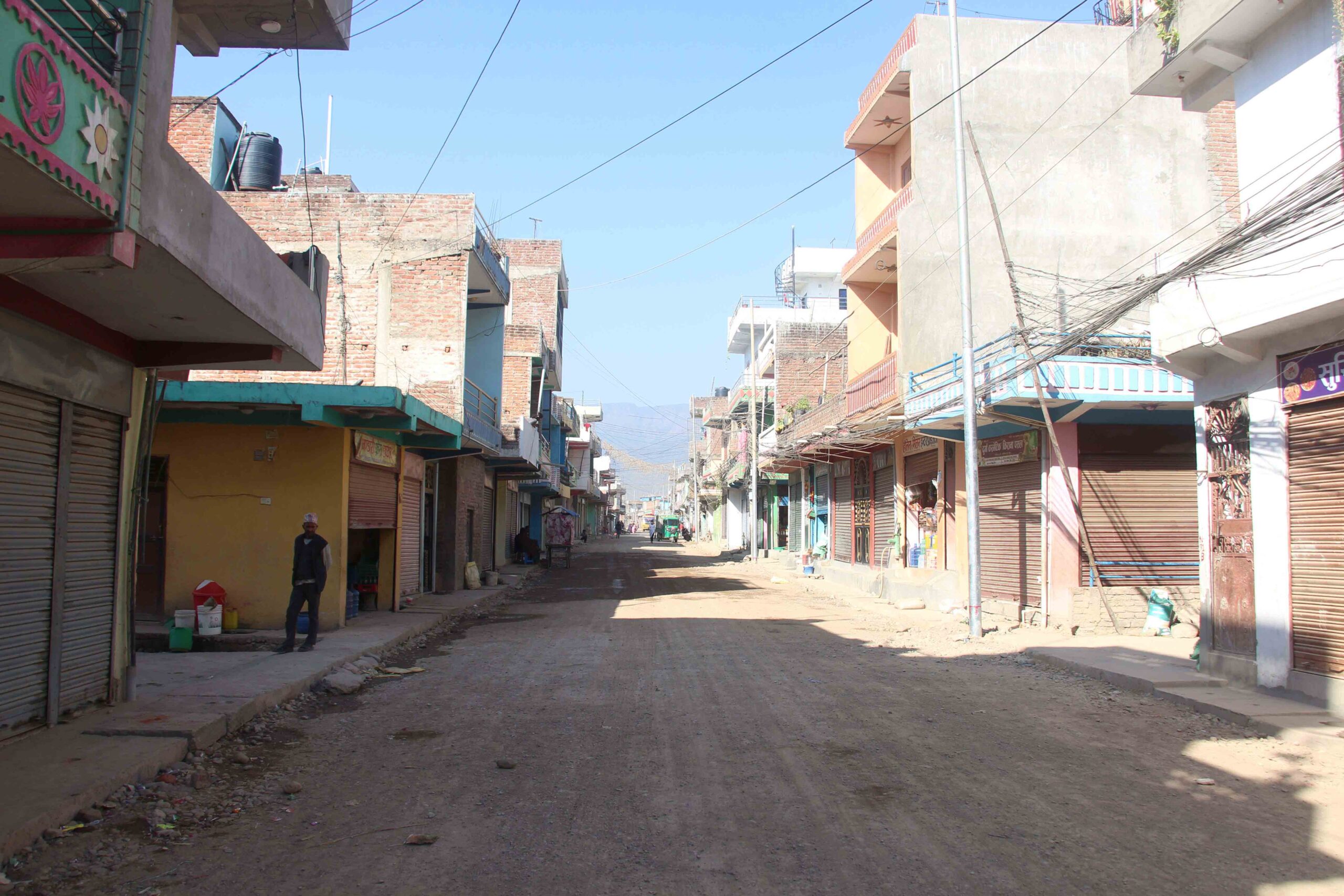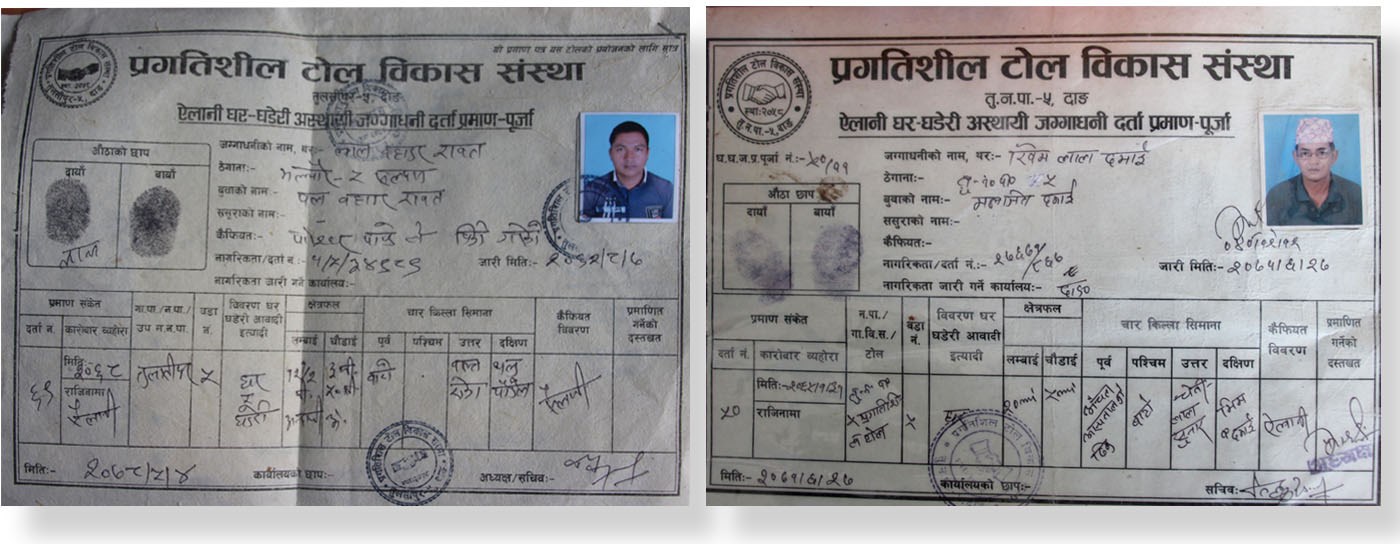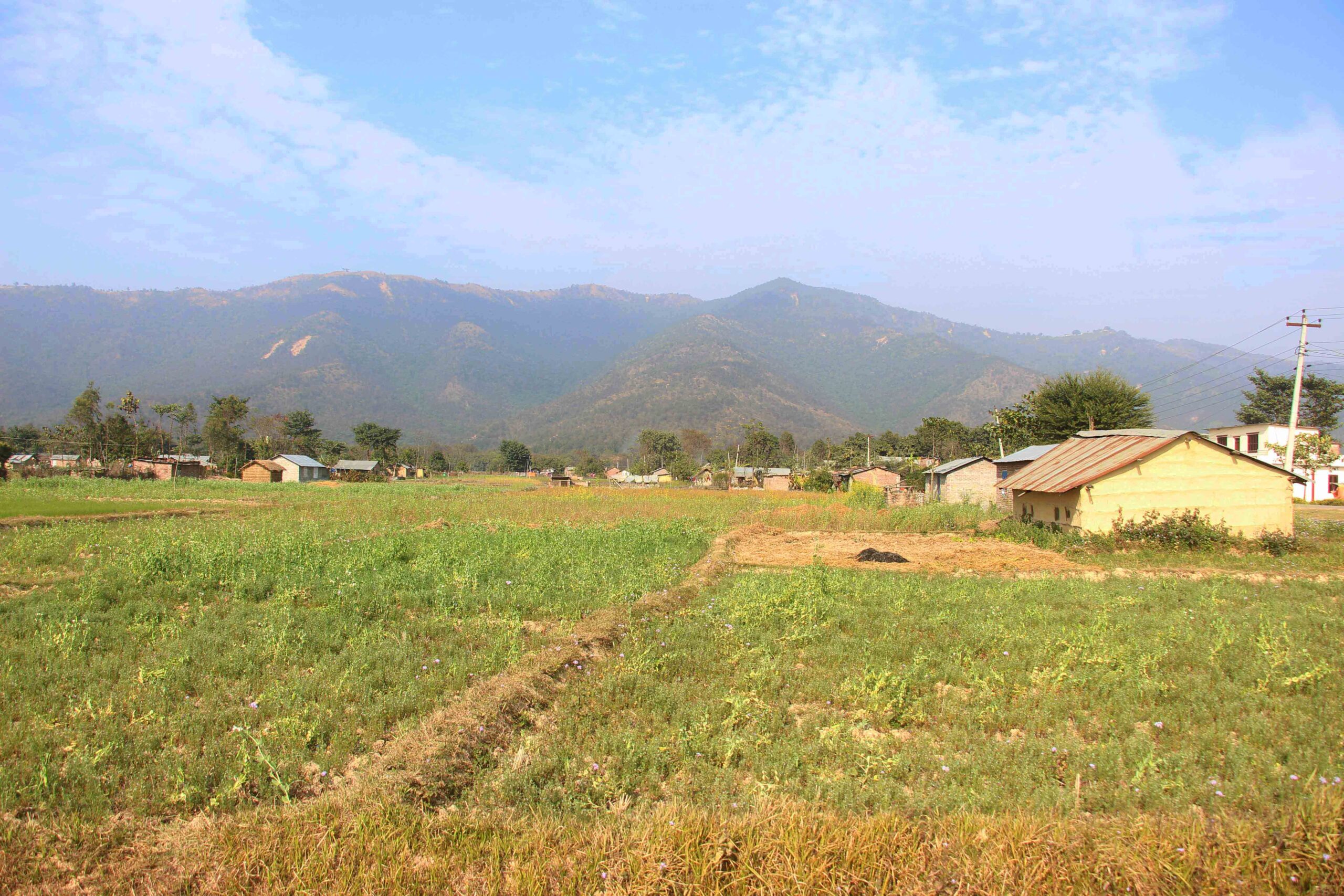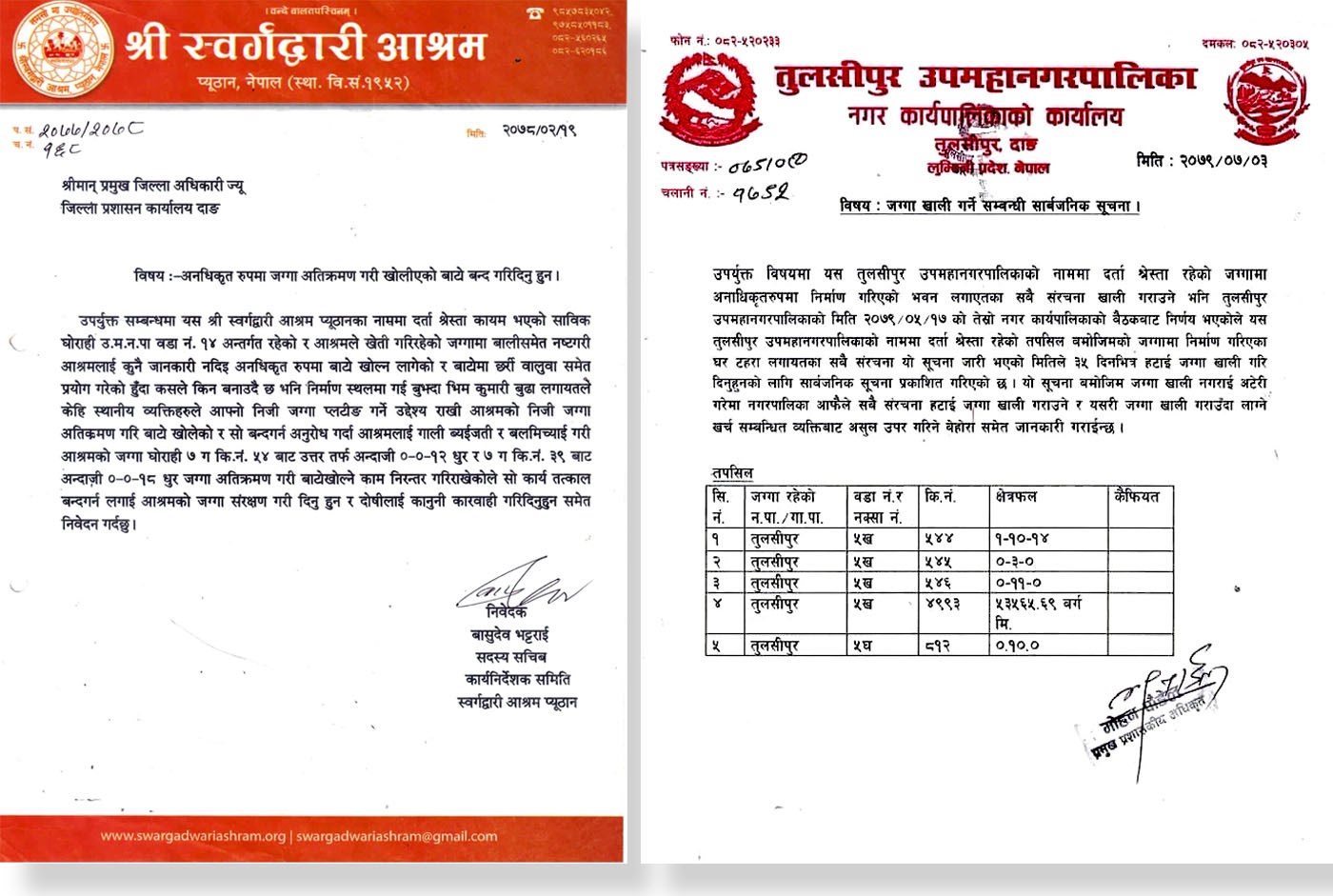Almost 19,000 bighas of land belonging to individuals, institutions and the government remain appropriated illegally. Having begun during the Maoist insurgency, this neglect of the rule of law and citizens’ rights continues to date.
Durgalal KC |CIJ, Nepal
The Rapti Academy of Health Sciences in Ghorahi, Dang is a crucial regional institution. It started as Rapti District Hospital, became Rapti Sub-regional Hospital and later evolved into an academy in 2018. However, the academy has faced a significant challenge in utilising its land for service expansion. This has impeded its growth despite plans to offer Bachelor of Nursing Science and Bachelor of Science in Nursing programs this year. The academy also needs to construct infrastructure to support MBBS and MD classes, but the lack of access to land has made it difficult to achieve this goal.
The academy has not been able to utilise half of its 5 bighas of land as it remains appropriated illegally, according to Dr. Vikas Lamichhane, the Vice-Chancellor of the academy. “We have pleaded with the police, local administration and political parties multiple times, but they have failed to get the land vacated,” told CIJ-Nepal. “We cannot clear the land alone; the concerned authorities have abandoned us.”
According to Prakash Thapa, registrar of the academy, apart from the illegal occupation, individuals and institutions have been building homes and selling the academy’s land. The district health office and other structures have also been built on the academy’s land. “We have written to the provincial government asking to vacate the health office,” said Registrar Thapa. “The problem is increasing due to political involvement and interest in the land occupied in the name of squatters.”

Houses built by occupying the land of the Mahendra Multiple Campus and the Nepal Police School in Lamhi-3, Tikuligarh in Dang. Photos: Durgalal KC
According to Narayan Prasad Bhusal, advisor of the academy and former president of the Dang Chamber of Commerce and Industry, there were 64 illegal houses on the academy’s land by the bank of the River Katuwa until 2064, but there are 160 houses now. “There is no space for the academy to grow as its land has been occupied from all sides”, said Bhusal.
The academy is not the only institution in Dang whose land has been occupied. There have been occupations in the lands at the local level, universities, educational institutions, government offices, ashrams and public land. According to data provided by the institutions and individuals, around 18,774 bighas of land in Dang remain illegally occupied.
Most of these lands were seized during the Maoist Insurgency. Long after the Maoists announced that all the occupied lands had been returned, those occupying them refused to vacate them. While some of the occupiers claim to be landless, others claim to be freed kamaiyas (former bonded labourers), and yet others claim to be mohi (long-term tenants).
A total of 92 bighas of the land belonging to the Mahendra Multiple Campus in Bharatpur remains occupied. There are 321 huts across 32 bighas of the campus’s land in Lamahi Municipality-3, Sonpur. Most of the people occupying the land have other sources of income. According to campus chief Bharat Neupane, 60 bighas of the land belonging to the campus at Dhanpuruwa in Rajpur remain occupied. Neupane said the campus loses an estimated Rs1.9 million in annual revenue from these two locations.
“We have written to the federal government, the district administration office, the district police office and the Lamhi Municipality repeatedly, requesting them to vacate the land. However, they have done nothing yet.”
Hundreds of bighas given by the donor
In 2010 BS, 56 people donated 1,700 bighas of land in Beljhundi and Deukhuri (southern valley of Dang) in Dang to establish the Nepal Sanskrit University. Out of that, 1,326 bighas of land in Deukhuri remained occupied for the past 21 years. In 2002 AD, the Maoists started occupying the land by demolishing the liaison office of the university in Rajpur.
Various people have now built concrete houses on the land occupied by the Maoists. The university can neither sell that land nor get any income from it. According to Madhav Adhikari, university registrar, some people are forcibly constructing houses saying they are mohi. “We don’t even have money to pay the revenue. We have requested the local level to waive the revenue because we cannot use the land.”

A temporary land registration certificate provided by a Tole Development Committee in Tulsipur-5 Patukhola, in Dang.
The university has 1,132 bigha and 12 kattha of land in Rajpur, 168 bighas and 7 katthas in Satbaria of Lamhi and 34 bighas and 19 katthas in Gobardiha of Garhwa. Officials said 277 families had been forcibly occupying the land, claiming they had their mohiani (tenant) rights.
The university raises the issue of land occupation in every meeting attended by the Prime Minister, the university’s chancellor. However, the university has seen nothing other than assurances. Although the university has often tried to compensate real mohis and regain the land, its efforts have not succeeded.
“Most of the land grabbers are not mohis, and that is the root of the problem,” said Yadav Prakash Lamichhane, Vice Chancellor of the university. Lamichhane believes that since political parties initiated the occupation of the land, the political parties themselves should take the initiative to free it.
Local government’s land also occupied
Three big houses stand to the east of the Tulsipur Sub-Metropolitan City office. The 10 dhur land of plot number 544 on which the houses are situated belongs to the sub-metropolitan city. There are 97 houses in the 1 Bigha and 10 kattha lands in plot number 544 in Ward 5 at Alamandi area in Bus Park. There are 19 houses on 3 kattha lands of plot number 545; 36 houses on 11 kattha land in plot number 546; and 47 houses on 7 bighas and 13 kattha land in plot number 4,993.
In Tulsipur, not only the sub-metropolitan city but also public land has been occupied and sold. In 2020, the National Vigilance Center conducted an on-site study and published a report on the occupation and sale of public land in Tulsipur. The report showed that even the then-executive members of the executive committee were involved in the sale and purchase of public land.

Houses built by occupying the land of the Mahendra Multiple Campus and the Nepal Police School in Lamhi-3, Tikuligarh in Dang.
According to the Vigilance Center, 1,000 bighas of public land spread north-south of Gwarakhola Bridge, located in Tulsipur sub-metropolitan city-16, is occupied and sold by land mafias. The centre had on February 24, 2020, directed the Chief District Officer of Dang district and the Tulsipur Sub-Metropolitan City to take action against the land grabbers and sellers and protect the public land.
Similarly, the Commission for the Abuse of Authority wrote to the Tulsipur Sub-Metropolitan City on December 29, 2020, to take necessary action regarding the seizure and sale of public land. Following this, the sub-metropolitan city issued a public notice to vacate the land. The city has written to the district administration office, the local police office in Tulsipur and the Armed Police Force base camp in Tulsipur. But all instructions and requests have been limited to letters.
The occupied land is also being sold and purchased by forming Tole (locality) Development Committees in Tulsipur. In the 3,500-household-strong settlement on the bank of the Patukhola River north of the bus park, land plots are being sold for between Rs300,000 and Rs1.5 million. The sale and purchase of such plots are made under the auspices of the Tole Development Committees, although such transactions do not have legal standing. There are 27 Tole Development Committees in the settlement that facilitate the land transaction, collect revenue, and provide temporary land registration certificates. At the request of the committees, the ward office has also been giving recommendations for services like electricity and water.
“The land was just occupied initially, but later, it started to be transacted. A large settlement has come up in the area,” Atiram Bista, the president of the Pragatisheel Tole Bikas Sanstha, told CIJ-Nepal. “We have formed a Tole Development Committee to regulate land transactions.”
Lal Bahadur Rawat, of Valchaur-5, Salyan, who bought a house from Pareshwar Pandey last August for 1.2 million, said, “Earlier, the transaction was just verbal. Now, they are providing certificates like the one the Land Registration Office provides.”
Khim Lal Damai, 69, who has been living in the settlement since 2007, said, “The leaders say they would provide permanent certificates, but no one is sure when they will fulfil their promises.”
Vote banks for parties
Of the 5,988 voters in Ward 5 in Tulsipur Sub-Metropolitan City, more than 4,000 live in this settlement by the Patukhola. Three of the four members elected to the ward in the local elections in 2022–Bhim Bahadur KC (Nepali Congress), Yuvraj Nepali and Lalmati Bhandari (NCP UML)–are residents of the settlement. Prem Prakash Giri, former president of the Progressive Tole Development Committee, said nobody could remove the settlement since it had the power to change the election results of the ward and the city.
According to Giri, the land was initially occupied in 2007 by the victims of the government and the rebel Maoists. Thereafter, Giri said, the influential people occupied it and sold it to others. “Those who came and lived here, in the beginning, have sold and left; wage earners and homeless people from elsewhere started coming here after getting a house at a low price.” According to Giri, the encroachment cannot be removed because the leaders of the political parties in their electoral rallied promise to register the land and distribute certificates.

A letter written by the Swargadwari Ashram requesting the District Administration Office, Dang, to stop the illegal land occupation.
City chief Tikaram Khadka says since the settlements are permanent, the sub-metropolitan municipality itself cannot remove them. “There are four or five storied concrete buildings on the land. The challenge is to remove the large slums that have already settled.”
Not only the sub-metropolitan city, which has the responsibility of protecting public property but also the lands of the district police office and the district administration office are under occupation apart from those of the educational institutions, guthi and Sports Development Committees.
The 25 bigha land of the District Administration Office, Dang, at Ghorahi Sub-Metropolitan City-16 Sani Ambapur, has been occupied for 18 years.
The land was occupied on July 4, 2005, in the name of freed kamaiyas. The land was occupied by 120 families. Fifty such families continue to occupy the land while others have gone elsewhere.
Similarly, Nepal Police School Ghorahi’s 21 bigha land at Lamhi-3 Tikuligarh is also under occupation. Police Inspector Poshan Thapa, head of security at the police school, said 200 people had formed a barricade. He said the land had not been used since the armed conflict and was fully occupied on Magh 16, 2008 during the first Constituent Assembly election.
“The people living there have the power to change election results. That is why the leaders are not ready to remove them,” said Thapa, “A high-level political initiative is needed to remove them.”
Swargadwari Ashram in danger
Of the 1034 bighas of land belonging to the Swargadwari Ashram, one of Nepal’s most important religious and tourist places, 958 bighas have remained occupied for 24 years. Swargadwari Mahaprabhu Hansananda Giri bought the land by collecting the offerings of devotees in 1982 BS.
Hari Adhikari, chief administrative officer of the ashram, said the ashram had failed to get the land back despite requesting the district administration and the court. “We are saints, and we have no power other than to appeal to the authorities. If we don’t get justice there, where will we go?” Adhikari said land mafias are now plotting the land, and the administration and the local government have done nothing to prevent it.
As the income from the land is depleted, regular activities of the ashram have been affected. Adhikari said 25,410 quintals of paddy and 5,852 quintals of mustard grown on the land have yet to be received.

Houses built by occupying the land of Swargadwari Ashram in Lamhi-4, Arnhawa, in Dang.
Over 34 bighas of the land belonging to Gogli Secondary School in Ghorahi-4 remain occupied and transacted illegally. Over 44 bighas of land belonging to the District Sports Development Committee in the Ghorahi Sub-Metropolitan City-1, Rampur, is occupied.
Over 44 bighas of the committee’s land in Kandakhuti and Simaltara of Rampur have also been occupied and settled. “Our efforts to clear the land have been unsuccessful, Padma Chaudhary, head of the office of the District Sports Development Committee, told CIJ-Nepal.
According to the District Forest Office, 6,000 households occupy 9,875 bighas of its forest land at 215 different locations. According to the Community Forest Users’ Federation, lands belonging to 76 community forests have been occupied illegally.
Locals say the Maoist Party is behind the occupiers in most cases of land occupation in the Dang district. According to Chandra Raj Pant, former coordinator of Civil Society Dang, “Large chunks of land were occupied during the insurgency. The Maoists occupied land again during the Constituent Assembly elections. Now, those occupying the land will not leave even if the Maoist Party asks them to,” Pant said.
Keshav Kumar Sharma, Coordinator of the Human Rights Network, Dang, says if the Maoist Party takes the lead, it won’t be challenging to vacate the land. “Either the Maoists should take the lead or the federal government should make an alternative arrangement and vacate the land.”
Nirmal Acharya, a central committee member and district in charge of the Maoist Center, says the party has not occupied any land at present. “We have returned all the land we had seized,” he said. “Farmers, landless squatters and free workers have occupied the land. It is not appropriate to involve our party in it.”
Acharya said his party had occupied 1,900 bighas of land and many houses during the insurgency but had returned everything during the peace process. “Many lands have been occupied during the movement of the landless,” said Acharya, “It is unfair to forcibly remove the landless without solving their issues.”
Jang Bahadur Chaudhary, who has built a house on the land of the District Administration Office in Ghorahi-16, says he had to occupy land as he had no land or home after being declared a freed kamaiya. “We have just taken shelter here. We won’t leave until the government makes an alternative arrangement.”
Sharda Chaudhary of Satbaria in Lamhi says three generations of her family have been ploughing the land of Swargadwari Guthi, so they have built a house on Guthi’s land. “We will stay here until we are given the land according to our rights,” Chaudhary said.
Bhim Bahadur Chaudhary of Rapti Rural Municipality-5, Sisahnia, claimed political leaders had promised to provide them with land registration certificates but had failed to fulfil their promises. This, Chaudhary said, was why they had to seize Guthi’s land.
The District Administration Office has written to all the local levels to collect the details of occupied land in the district but has failed to get the details yet. According to Chief District Officer Sushil Vaidya, if the landless people who have occupied the land can be managed by giving alternatives, others can be removed by force. Superintendent of Police Bir Bahadur Wali says the land cannot be vacated without the initiative of political parties.
Nepali Congress district president Shankar Dangi says if the occupied land is not vacated, there will be no public property left in the district. “There is no public land anywhere”, Dangi said. “The police and the administration should stop such illegal activities, and we are willing to help.”
CPN-UML district president Hukum Basnet says political parties should not encourage land occupiers. “It is illegal to usurp public property,” Basnet said, “The wrongdoings of the insurgency era should not be allowed to continue.”



